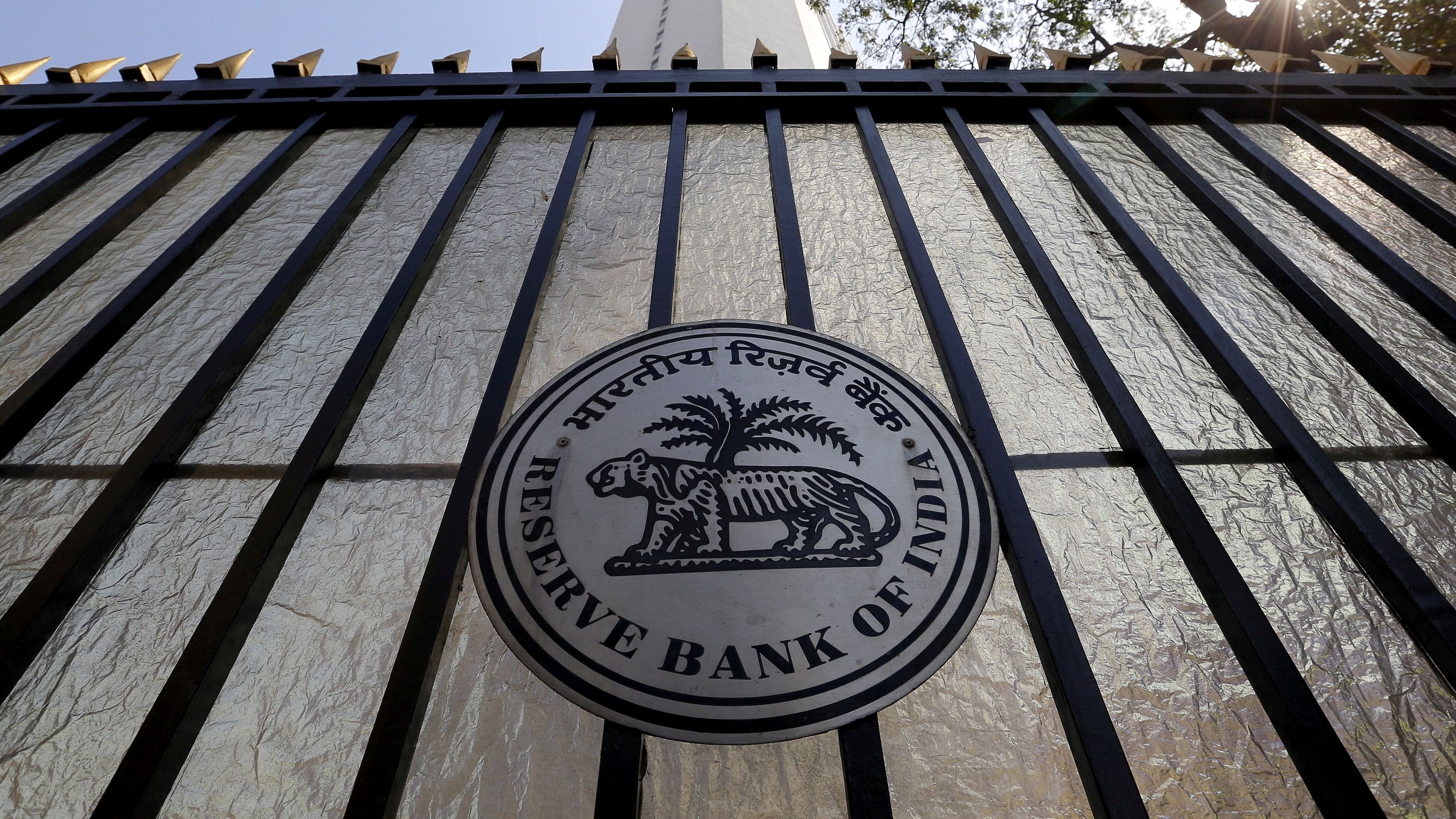
The Reserve Bank of India seal is pictured on a gate outside the RBI headquarters in Mumbai
Credit: Reuters/Danish Siddiqui
The discussions about the health of the economy are tinged with muted pessimism as inflation continues its upward spiral, growth is below the previous year, and private consumption and investments are slowing down. A few months back, Raghuram Rajan, the former RBI governor, stated: “We would be lucky if we hit 5 per cent growth.” Seen in this background, the recent RBI annual report provides insightful growth story, along with its monetary health. The ensuing controversy about the growth prospects of the Indian economy and subsequent RBI press releases raised several questions.
First of all, were the former governor’s worries unfounded? What are the major contributing factors to the growth story, and how sustainable are they? Have corporates and industries substantially contributed to the growth trajectory? Was the monetary tightening effective in reining in inflationary forces? Have we tied up the demand for resources by overborrowing?
The RBI annual report estimated a 7 per cent real GDP growth in 2022–2023, lower than 9.1 per cent in the previous year. The economy picked up momentum during the second quarter, with robust growth in the services sector. However, the fact that the growth momentum was sustained during the year, along with good control over aggregate inflation, is positive news. This was largely thanks to the hidden contribution of the unorganised sector that bounced back and recovered in the post-pandemic period. The growth was substantially supported by gross capital formation, which surged to 31.4 per cent of GDP. In the report, the RBI gives due credit to the increased investment demand and its contribution to the growth scenario.
Gross Value Addition (GVA) in real terms is an effective indicator of the health of the economy. It should be noted that real growth in GVA comes from the services sector (9.3 per cent), of which a major share is contributed by trade, hotels, transport, and communication (14.2 per cent). Financial services as well as real estate will also contribute to the post-pandemic year. Unfortunately, in the industrial sector, which recorded a pathetic growth in real GVA of 1.7 per cent, the participation of manufacturing is pitiable at 0.6 per cent, whereas electricity, gas, and water supply have contributed to the GVA at 9.2 per cent. Similarly, employment also came mainly from the services sector. The RBI gives credit to sound macroeconomic policies, softer commodity prices, a robust financial sector, and a healthy corporate sector, but will the growth in the services sector sustain itself over the years to come?
The inflationary pressures in the Indian economy posed a challenge as they had crossed the pre-decided tolerance level of 6 per cent for 10 months before sobering down after November 2022. The monetary policy focused on monetary tightening, which gave good results. The inflation trajectory is now expected to move down to 5.2 per cent. Following the methodology that other countries use in monetary tightening, the MPC used similar tools, and nothing out of the box was attempted. Given the present conditions of the economy, this needs to be maintained at around 4 per cent.
In an overall analysis, the RBI report underscores the factors that would help India continue its growth trajectory, including macroeconomic policies, softer commodity prices, a robust financial sector, a healthy corporate sector, and others. However, amid slowing global growth, a decline in net Indian exports, rising food prices, and the management of public debt by both the Centre and states have to be observed. Food inflation has crossed the 4 per cent target. Total outstanding internal debt to states and the Centre now amounts to Rs 133 lakh crores and Rs 53 lakh crores, respectively (2022-23), of which 69 per cent to 83 per cent are financed through market borrowing. The gross Fiscal Deficit is touching 10 per cent of GDP.
Of concern is an increase in the net annual market borrowing of the Central Government from Rs 511.5 thousand crores to Rs 1174.4 thousand crores in the three years 2019-20 to 2022-23, which has serious implications for inflation and private sector borrowings. The net market borrowings by states are around Rs 5–6 lakh crore annually. Tamil Nadu, Andhra Pradesh, and Maharashtra are among the highest borrowers from the markets and banks. Amid these, external vulnerability and internal price spikes, along with the problem of unemployment and the necessity to deepen financial inclusion, are some of the important takeaways for future monetary policy course corrections. The overall scenario is therefore not very satisfying.
(The writer is a researcher at the Institute for Social and Economic Change, Bengaluru)